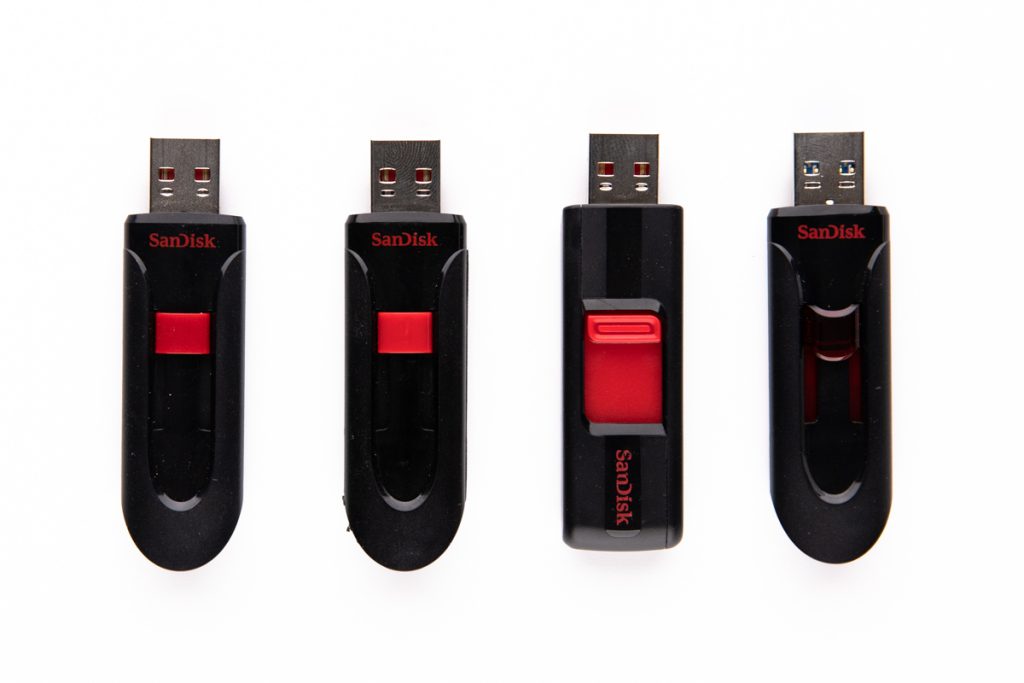Within the domain of data storage, a persistent rivalry has endured for years between two primary contenders: USB flash drives and conventional hard drives. Although these storage methodologies share the common objective of data retention and retrieval, their approaches diverge significantly. In the forthcoming discourse, we shall extensively examine the attributes, advantages, and drawbacks intrinsic to both flash drives and traditional hard drives, thereby facilitating the discernment of the optimal choice tailored to your precise requisites.
What Constitutes a Flash Drive and Its Operational Mechanism?
Referred to interchangeably as a USB flash drive or thumb drive, a flash drive stands as a compact and portable storage device that employs flash memory chips to house data. Flash memory, being of the non-volatile variety, retains stored information even in instances of power cessation. This attribute underscores the convenience of flash drives for seamless file transfer across diverse devices.
These chips are systematically arranged into a storage array, with individual cells in said array embodying binary values of 0 or 1. For the act of data authoring, electric charges are applied to the cells, thereby inducing a change in their state. Conversely, data reading necessitates the measurement of electric current traversing the cells, facilitating the discernment of their respective states.
The inscription and retrieval of data from a flash drive occur through the manipulation of electric circuits within the flash memory chips.
Flash drives establish linkage with computers and alternative apparatuses through a USB (Universal Serial Bus) interface. Typically available in an array of storage capacities, spanning from a few gigabytes to numerous terabytes, flash drives, by virtue of their absence of mechanical components, exhibit resistance to physical impairment attributed to falls or vibrations.
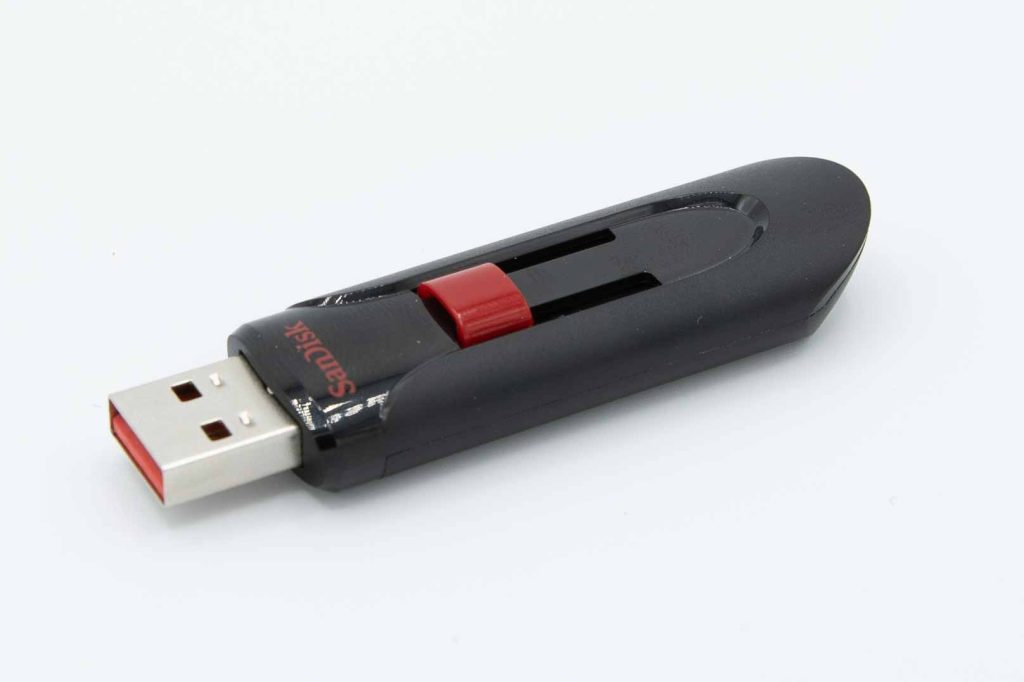
The Nature and Mechanism of a Conventional Hard Drive Explored
Termed interchangeably as a disk drive or HDD (Hard Disk Drive), a traditional hard drive has stood as the fundamental storage mechanism for computers and data centers over the course of several decades. In stark contrast to flash drives, conventional hard drives rely upon rotating disks and magnetic heads to undertake data reading and writing operations.
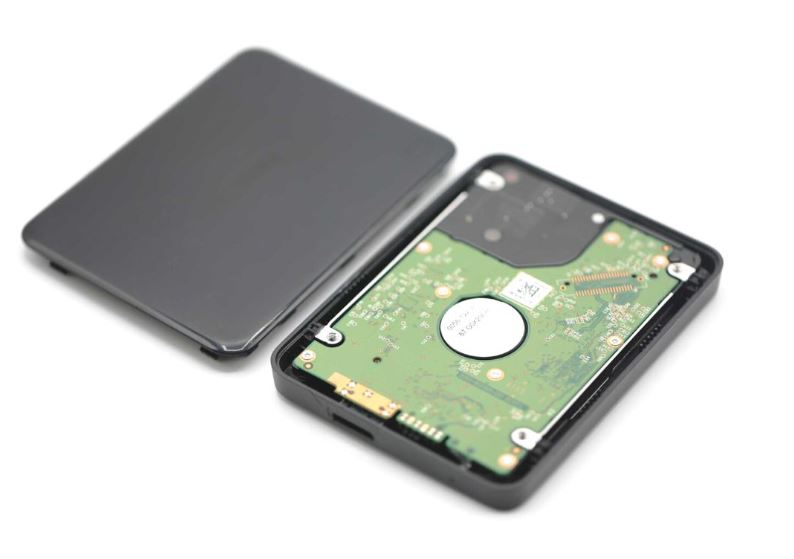
Nested within a hard drive structure, multiple spinning disks, colloquially referred to as platters, are coated with a magnetic substance. Positioned atop each platter is a magnetic head. The platters undergo rapid rotation whilst the magnetic heads traverse their surfaces to effectuate data reading and writing. During the data inscription process, the magnetic heads meticulously arrange magnetic particles on the platters in predetermined configurations, thereby encapsulating the binary essence of the information.
Conversely, data retrieval entails the magnetic heads discerning alterations in the magnetic field adorning the platters, subsequently transmuting these alterations into comprehensible data.
Flash Drive Pros and Cons
The realm of flash drives is replete with advantages that engender their widespread adoption amongst a myriad of users. To commence, their inherent absence of mechanical components renders them endowed with robustness and imperviousness to physical harm. This intrinsic durability renders flash drives particularly fitting for integration within portable devices such as laptops, tablets, and digital cameras, wherein their exposure to constant motion or sudden jolts is a plausible occurrence.
A further salient virtue that characterises flash drives pertains to their diminutive proportions and portability. Their compactness permits effortless accommodation on a keychain or within a pocket, facilitating the seamless carriage of voluminous data wherever one ventures. Moreover, flash drives exhibit superior access times and elevated data transfer velocities vis-à-vis traditional hard drives, thereby suiting tasks necessitating expeditious data retrieval or recurrent file transference.
Notwithstanding these commendable attributes, it is imperative to acknowledge certain limitations intrinsic to flash drives. One such constraint resides in their finite lifespan in terms of write cycles. Each individual flash memory cell is endowed with a finite threshold for write operations before entering a state of degradation. Notwithstanding strides in enhancing the endurance of contemporary flash drives, the imposition of substantial and ceaseless writing activity can, over time, precipitate data corruption or operational breakdown.
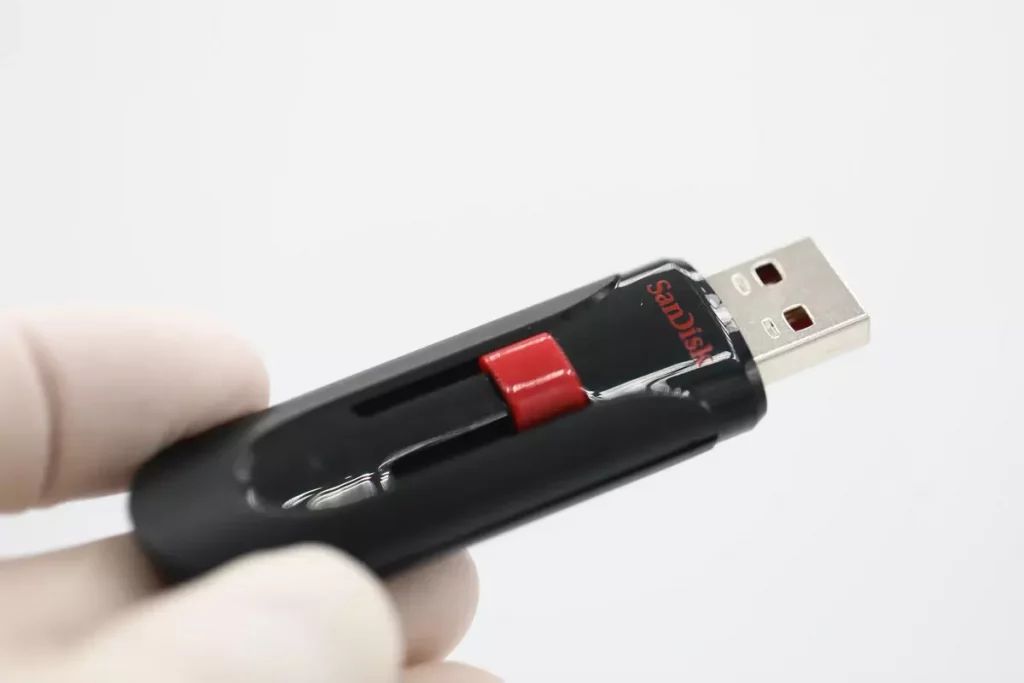
Traditional Hard Drive Pros and Cons
Conventional hard drives have upheld their role as stalwart guardians of data storage over an extended span, and they persist in wielding distinct advantages in contrast to flash drives. A pivotal asset lies in their augmented storage capacity. Hard drives manifest in dimensions stretching to several terabytes, rendering them an optimal repository for housing expansive media files, intricate software applications, and sprawling databases.
Further augmenting their appeal, traditional hard drives lay claim to a characteristic of cost-effectiveness. In juxtaposition with flash drives, hard drives extend a substantially reduced cost per gigabyte of storage. This cost-efficient attribute renders them a preferred choice for individuals necessitating substantial storage capacities whilst remaining mindful of financial considerations.
Conversely, the domain of traditional hard drives is not without its drawbacks. Their reliance upon mechanical components and spinning platters renders them susceptible to susceptibility to physical detriment ensuing from instances of drops, impacts, or vibrations.
This attribute renders their compatibility with portable devices or scenarios, prioritising robustness less optimal.
Moreover, conventional hard drives exhibit comparatively protracted access times and diminished transfer velocities in relation to flash drives. Given that the magnetic heads necessitate physical traversal across the rotating disks to attain data access, the procedure engenders a lengthier duration. Such comparatively diminished performance can potentially pose a drawback in activities demanding data retrieval of heightened performance or sustained read/write undertakings.
Flash Drive vs Traditional Hard Drives: A Comparative Analysis
The selection between a flash drive and a traditional hard drive hinges upon the distinctive requisites and scenarios you encounter. To facilitate a well-informed decision-making process, let us juxtapose these options across various criteria:
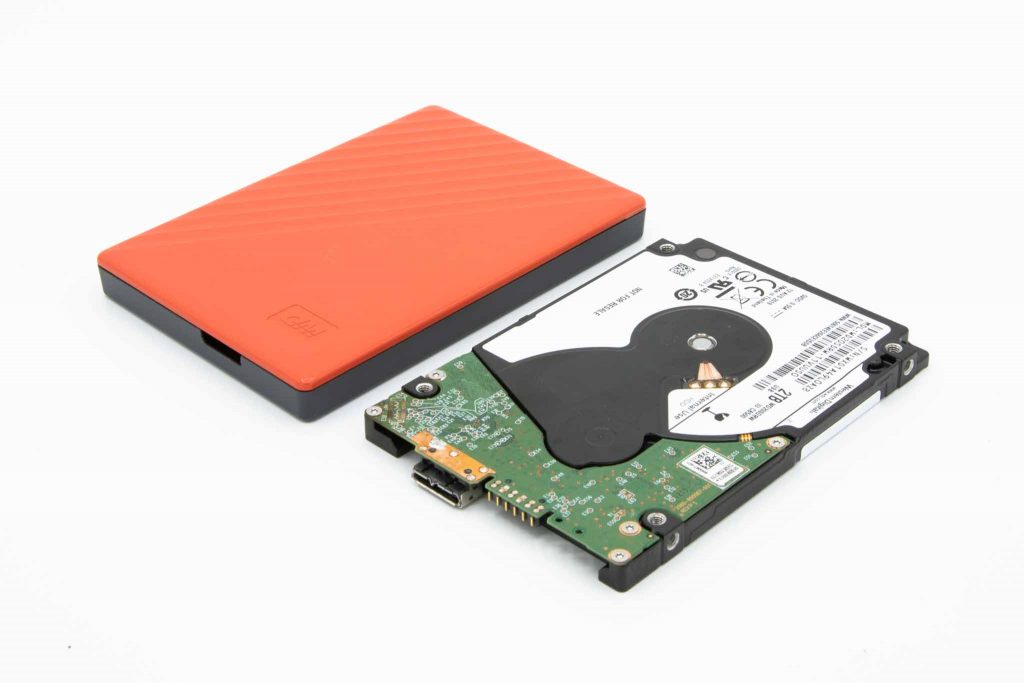
Portability: Flash drives exhibit enhanced compactness and portability, rendering them apt for mobile devices and seamless data transfer whilst on the move. Conversely, traditional hard drives, being bulkier, are better aligned with stationary usage scenarios.
Durability: Owing to their lack of moving components, flash drives demonstrate heightened resistance to physical impairment ensuing from falls or vibrations. In contrast, traditional hard drives prove more susceptible to harm and stand susceptible to potential failure upon significant impact.
Storage Capacity: Traditional hard drives present superior storage capacities, rendering them a superior choice for individuals necessitating expansive storage realms for media files, software suites, or comprehensive databases.
Cost: Traditional hard drives afford a larger storage expanse at a diminished cost per gigabyte in comparison to flash drives. This cost-efficiency endows them as a pragmatic choice for those requiring substantial storage allocations whilst observing budget constraints.
Speed: Flash drives exhibit expedited access times and elevated transfer velocities relative to traditional hard drives. These attributes render them apt for endeavors demanding swift data retrieval or recurrent file transfers.
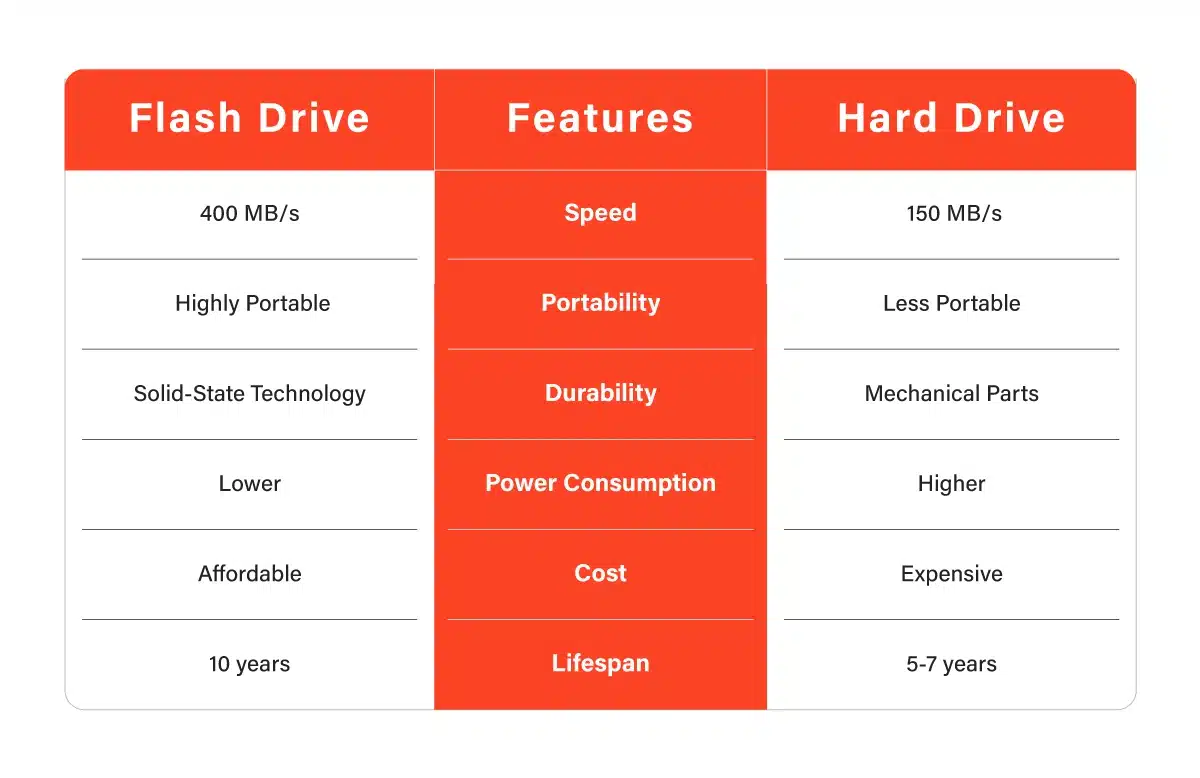
To summarise, flash drives excel at the aspects of portability, durability, and accelerated access times, rendering them well-suited for mobile devices and tasks necessitating elevated-performance data transfers. In contrast, traditional hard drives demonstrate prowess in terms of storage capacity and cost-effectiveness, positioning them as the favored selection for users seeking extensive storage capabilities at a reasonable expense.
Ultimately, the deliberation between opting for a flash drive or a traditional hard drive hinges upon the specifics of your prerequisites. It is prudent to contemplate elements such as mobility, durability, storage capacity, cost, and speed in order to ascertain the option that harmonises most effectively with your demands. Irrespective of whether your emphasis lies on portability or storage capacity, both flash drives and traditional hard drives persist in their indispensable roles within the domain of data storage, capably catering to a wide spectrum of user inclinations and application scenarios.
Frequently Asked Questions
Which exhibits greater speed, a flash drive or an HDD?
Flash drives generally surpass HDDs in terms of data transfer speed. Flash drives employ solid-state storage, facilitating rapid access times and expedited data transfers. Conversely, HDDs hinge upon rotating disks and mechanical read/write heads, which can engender a comparatively slower performance.
Which alternative proves superior for portable usage, a flash drive or an HDD?
Flash drives have emerged as the preferred option for portable usage. Their compact dimensions and streamlined configuration render them eminently convenient for data portability. Moreover, their robustness and capacity to withstand physical damage position them as apt choices for integration within portable devices like laptops, tablets, and digital cameras. Conversely, the larger form factor and mechanical constituents of HDDs make them better suited for stationary deployment.
Are flash drives more resilient than HDDs?
Indeed, flash drives commonly exhibit enhanced durability compared to HDDs. The absence of moving components in flash drives imparts resistance to physical harm arising from drops, jolts, or vibrations. In contrast, HDDs encompass rotating disks and delicate read/write heads, rendering them more vulnerable to impairment in cases of mishandling.
Can I house substantial files on a flash drive?
Indeed, you can amass significant files on a flash drive. Flash drives are available in diverse storage capacities, spanning from a few gigabytes to numerous terabytes. This spectrum accommodates the storage of files of varied dimensions, including sizable media files, software applications, and extensive databases. However, if the necessity for an extensive storage realm tailored to large files arises, conventional HDDs, with their augmented capacities, might offer a more fitting solution.
"*" indicates required fields
